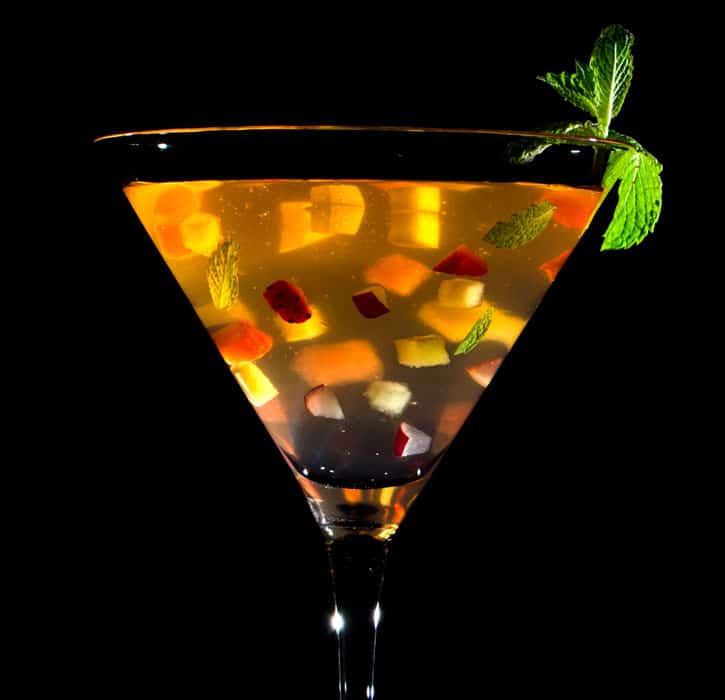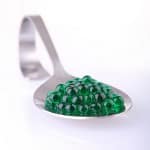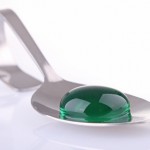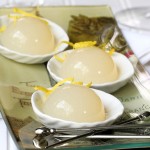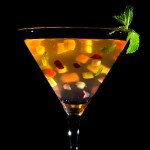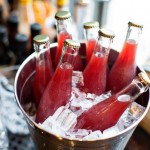Come 4pm, everyday, the kitchen at the TH (Tulleeho) office reverberates with a constant clanking sound of a spoon being used to whip up what sounds like the greatest omelette ever made! 10 minutes later, with clockwork precision, emerges the frothiest cup of coffee you’d have seen which is hurriedly carried into Boss man’s cabin while the poor accountant is almost dead due to the lack of caffeine! The vicinity’s greatest barista (aka Gopiji) has just made yet another stunning cup of doodh coffee that will put any self respecting server at a coffee shop to shame.
The point of me waxing eloquent about Gopi’s coffee making skills lies in the fact that he puts to use one of food science’s most basic yet difficult to master techniques of creating what may be crowned in a fancier manner as ‘Molecular Gastronomy’. Wait? What? Isn’t that stuff supposed to have smoke coming out of dishes with pureed spinach that looks like olives and tomato soup in the form of noodles? Well, not always. In combining sugar and coffee together with a bit of warm water and then vigorously mixing the blend, the carbs in the sugar and the protein in the coffee combine to generate a frothy texture accelerated by air molecules that get trapped in the mix. Simple, yet very effective.
Molecular Mixology, an extension of Molecular Gastronomy, entered modern bar lexicon at the turn of the last century when award winning chefs like Ferran Adria and Heston Blumenthal worked on serving cocktails that were created using molecular gastronomy techniques. Very soon this trend was taken to the next level by pioneering mixologists like Tony Coniglario in London and Eben Freeman in New York City. Suddenly, instead of drinking a boring glass of bubbly, you could have it with small clear caviars made from Cointreau or a glass of Margarita with an added zing of lime air on top of it! Today, craft bars across the world (and including India) adopt molecular mixology techniques to give their drinks an added appeal. Take for example the ‘Churchgate’ cocktail made by award winning Indian bartender, Devender Sehgal at Ellipsis, Colaba. It is a heady mix of rum, tamarind and jaggery topped up with and frothy air of Earl Grey tea. The Earl Grey air slowly ‘bursts’ as you sip on the drink, there by creating a lovely aroma as well as flavours the concoction. A must try when ever you are there next!
While the terms may sound like jargon, here are some popular techniques that are used by bars to create drinks with a molecular touch.
Spherification: A technique created by renowned Spanish Chef, Ferran Adria, it uses alcohol or juice mixed with algin (extracted from seaweed) which is introduced drop by drop to a bath of calcium lactate or chloride with water to create ‘pearls’ or ‘caviars’ out of liquids. Bars use this method to create garnishes for sparkling wine or serve a portion of the drink in this form on the side.
Reverse Spherification: Here, calcium lactate is mixed with the alcohol or juice and then introduced into a bath of algin. This technique is used to create ravioli sized round balls. Popular for preparing a molecular take on the B-52 shot where In the Kahlua and Baileys is formed into ravioli’s and then allowed to float in a shot of Cointreau or Grand Marnier!
Cocktail Gels: Or also known as Jellification, it is a very popular technique adopted by bars. This is something you can do at home as well. Either gelatine or agar is used along with alcohol or juices to help the mix coagulate into a gel. Depending on the firmness you want to achieve in the drink, you can vary the proportions of gelatine or agar in the mix.
Suspension: Xanthan gum mixed with alcohol or juice is used to create a thick liquid into which fresh chopped fruits are added. The pieces of fruit do not sink into the drink as the xanthan helps in letting the pieces of fruit remain in suspension. One of Chef Adria’s creation is a white sangria with pieces of fruits and herbs suspended in the drink.
Carbonated cocktails: Imagine drinking an Old fashioned or Negroni, that is freshly carbonated with CO2?! This technique is possible by introducing a pre mixed cocktail into an air tight container and then charging the mix with a CO2 capsule. This is only possible in special containers made for this purpose. One such device is the Perlini Shaker.
These are just a few MM techniques that have become popular over the years. Bars also use smoking guns to create smoked cocktails. Smoking, as a technique, is more on the lines of enhancing flavour than it being a molecular technique in itself.
And if you were wondering about the potential hazards of such cocktail, fear not! Molecular ingredients used by bars are all food grade and are stuff that you and I imbibe in various other forms. Take for example Xanthan Gum. Sounds like you might have a stuck jaw after drinking a cocktail made with it! But in reality xanthan is present in readymade sauces to toothpaste to purees. It helps holding water and solid particles together in a thick form. Most Chinese eateries, worth their weight in salt, would use agar as a thickening agent in their cuisine.
Bars across the world are seemingly divided in their approach to molecular cocktails. There are bars that incorporate a great deal of such techniques in their drinks. While there are others who stay away. I, for one, prefer using simple molecular techniques in creating an enhanced appeal in my recipes. Imagine a classic martini served with pureed olives shaped as raviolis on the side. Rather cool, no?
To end my piece, I’ll leave you with a recipe for creating a cocktail gel in the comfort of your bar (or kitchen). Try looking for good quality gelatine (powder or sheets) or agar. I prefer the latter. Usually imported. Agar should be readily available in a high end food store. Incase you are using gelatine sheets, soak them in cold water for a few minutes till they are soft.
Gin & Tonic Cocktail Gel
Premium London Dry Gin 60ml
Schweppes Tonic Water 200ml
Sugar syrup 20ml (to offset the bitterness of the tonic. Omit if desired)
Agar 2.5gms
OR
3 sheets of Gelatine
In a glass bowl, add the gin and tonic and slowly heat over boiling water (a double boiler). Heat till it becomes slightly warm. Now add to this the agar and whisk well to dissolve. Leave this mix in a refrigerator for a few hours till it sets. Cut into cubes and serve over freshly sliced lemon soaked in a drop of cocktail bitters.
Please note: If you are using gelatine sheets, dissolve the softened sheets in 100ml of hot water prior to adding the rest of the ingredients.
TH!
